
|
It brightened very rapidly. Now it is 10.7 mag (June 16, Osamu Miyazaki). It will fade out rapidly after this. In the Northern Hemisphere, it stays observable in good condition. In the Southern Hemisphere, it is not observable now, but it will appear in August.
Date(TT) R.A. (2000) Decl. Delta r Elong. m1 Best Time(A, h)
June 17 13 1.57 74 55.9 0.714 1.053 72 9.7 21:03 (170, 48)
June 24 13 38.81 77 24.4 0.683 1.033 71 9.5 21:04 (173, 46)
|
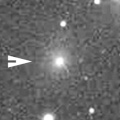
|
Now it is 10.6 mag (June 1, Thomas Lehmann). It will turn to fade out rapidly after brightening. In the Northern Hemisphere, it will be unobservable in October. In the Southern Hemisphere, it stays observable in good condition.
Date(TT) R.A. (2000) Decl. Delta r Elong. m1 Best Time(A, h)
June 17 0 35.29 -18 45.3 1.335 1.609 85 10.2 2:58 (303, 12)
June 24 0 25.83 -22 37.3 1.115 1.574 95 9.7 3:00 (313, 16)
|

|
Now it is 10.6 mag (Apr. 9, Ken-ichi Kadota). It stays 10 mag for a while. It will be getting higher gradually.
Date(TT) R.A. (2000) Decl. Delta r Elong. m1 Best Time(A, h)
June 17 3 3.99 18 3.9 3.007 2.274 36 10.0 2:58 (251, 5)
June 24 3 7.05 16 35.9 2.927 2.291 42 9.9 3:00 (256, 9)
|

|
It brightened up to 8 mag from 2022 summer to 2023 spring. Now it is 10.8 mag (June 10, Chris Wyatt). Fading slowly. In the Northern Hemisphere, it is not observable now, but it will appear in August. It locates somewhat low in the Southern Hemisphere. But it will become high in summer.
Date(TT) R.A. (2000) Decl. Delta r Elong. m1 Best Time(A, h)
June 17 5 44.70 -13 30.5 3.580 2.834 36 10.9 21:03 (106,-44)
June 24 5 52.51 -12 28.1 3.654 2.895 36 11.1 3:00 (255,-41)
|
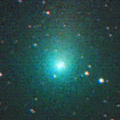
|
It brightened up to 9.5 mag from winter to early spring (Jan. 30, Katsumi Yoshimoto). Now it is 12.2 mag (June 16, Osamu Miyazaki). Fading gradually. In the Northern Hemisphere, it stays observable in good condition. It locates somewhat low in the Southern Hemisphere. But it will become high in summer.
Date(TT) R.A. (2000) Decl. Delta r Elong. m1 Best Time(A, h)
June 17 0 59.78 35 15.9 2.615 2.299 60 12.0 2:58 (249, 37)
June 24 0 59.93 34 31.7 2.562 2.356 66 12.1 3:00 (253, 43)
|

|
It is expected to brighten up to 11 mag in July. Now it is 14.6 mag (June 14, Masayuki Suzuki). It will turn to fade out rapidly after brightening. It stays extremely low. But it will become high in autumn in the Northern Hemisphere, or in autumn in the Northern Hemisphere. Recently it is much fainter than this ephemeris.
Date(TT) R.A. (2000) Decl. Delta r Elong. m1 Best Time(A, h)
June 17 2 39.32 20 52.2 1.506 1.006 41 12.6 2:58 (252, 11)
June 24 3 15.80 21 56.5 1.505 0.972 39 12.1 3:00 (251, 11)
|

|
Now it is 12.3 mag (June 13, Juan Jose Gonzalez). It stays 13 mag for a while. It will be unobservable in July in the Northern Hemisphere, or in August in the Southern Hemisphere. But it will be observable again in September in the Southern Hemisphere, or in October in the Northern Hemisphere.
Date(TT) R.A. (2000) Decl. Delta r Elong. m1 Best Time(A, h)
June 17 10 21.71 -6 10.2 3.826 3.694 74 12.2 21:03 ( 70, 16)
June 24 10 20.68 -6 48.7 3.956 3.707 68 12.3 21:04 ( 74, 10)
|
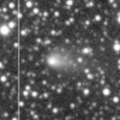
|
It brightened very rapidly as expected. Now it is 12.2 mag (June 16, Osamu Miyazaki). It will fade out rapidly after this. It stays observable in good condition.
Date(TT) R.A. (2000) Decl. Delta r Elong. m1 Best Time(A, h)
June 17 20 0.07 -4 11.8 1.111 2.005 141 12.3 2:22 ( 0, 51)
June 24 19 57.74 -2 48.9 1.086 2.013 146 12.3 1:52 ( 0, 52)
|

|
Now it is 12.4 mag (June 10, Thomas Lehmann). Fading slowly. In the Northern Hemisphere, it is not observable now. In the Southern Hemisphere, it stays observable in good condition. It was expected to brighten up to 10 mag from spring to summer. However, it is fainter than originally expected.
Date(TT) R.A. (2000) Decl. Delta r Elong. m1 Best Time(A, h)
June 17 21 5.74 -81 30.4 2.481 3.097 118 12.4 2:58 (359,-26)
June 24 20 44.60 -85 1.8 2.506 3.106 117 12.4 2:45 ( 0,-30)
|
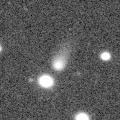
|
It is expected to brighten up to 7 mag in early 2024. Now it is 13.8 mag (June 9, Chris Wyatt). Brightening gradually. In the Northern Hemisphere, it is not observable now. It locates somewhat low in the Southern Hemisphere. But it will become high in winter.
Date(TT) R.A. (2000) Decl. Delta r Elong. m1 Best Time(A, h)
June 17 6 39.62 -23 31.1 4.020 3.442 49 13.4 21:03 ( 86,-38)
June 24 6 49.86 -23 26.7 3.965 3.370 47 13.3 21:04 ( 89,-42)
|

|
Now it is 12.6 mag (June 10, Thomas Lehmann). It will fade out rapidly after this. It stays observable in good condition.
Date(TT) R.A. (2000) Decl. Delta r Elong. m1 Best Time(A, h)
June 17 17 14.32 -18 21.7 1.317 2.327 172 13.4 23:32 ( 0, 37)
June 24 17 8.26 -18 27.8 1.372 2.368 165 13.6 22:59 ( 0, 36)
|

|
It brightened up to 8.3 mag in 2021-2022 winter (Jan. 6, 2022, Toshiyuki Takahashi). Now it is 12.7 mag (June 10, Chris Wyatt). Fading slowly. In the Northern Hemisphere, it is not observable now. In the Southern Hemisphere, it will be getting lower gradually. But it will be getting higher again after September.
Date(TT) R.A. (2000) Decl. Delta r Elong. m1 Best Time(A, h)
June 17 9 25.05 -29 59.8 5.921 5.761 76 13.5 21:03 ( 60, -9)
June 24 9 29.76 -30 0.9 6.038 5.805 72 13.6 21:04 ( 63,-14)
|

|
It approached to Earth down to 0.29 a.u. in early February, and it brightened up to 4.5 mag (Feb. 1, Juan Jose Gonzalez). Now it is 13.1 mag (June 10, Chris Wyatt). Fading gradually. In the Northern Hemisphere, it is not observable now, but it will appear in September. In the Southern Hemisphere, it will be getting higher gradually.
Date(TT) R.A. (2000) Decl. Delta r Elong. m1 Best Time(A, h)
June 17 5 53.70 -18 14.8 3.197 2.531 41 13.6 21:03 ( 99,-45)
June 24 5 59.41 -19 32.4 3.260 2.611 43 13.7 3:00 (262,-46)
|
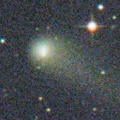
|
It brightened up to 11.1 mag in early 2022 (Mar. 31, 2022, F. Kugel, J.-G. Bosch, J. Nicolas). Now it is 13.3 mag (June 9, Thomas Lehmann). Fading slowly. In the Northern Hemisphere, it stays observable in good condition. In the Southern Hemisphere, it will be getting lower gradually after this, and it will be unobservable in October.
Date(TT) R.A. (2000) Decl. Delta r Elong. m1 Best Time(A, h)
June 17 15 15.22 21 48.4 4.602 5.223 122 13.7 21:34 ( 0, 77)
June 24 15 13.63 21 51.3 4.703 5.256 117 13.8 21:05 ( 0, 77)
|

|
It will brighten rapidly up to 13.5 mag in summer. Now it is 15.6 mag (June 11, A. Hale). It stays 14 mag for a while. In the Northern Hemisphere, it will be getting higher gradually. In the Southern Hemisphere, it will be getting lower gradually after this, and it will be unobservable in September.
Date(TT) R.A. (2000) Decl. Delta r Elong. m1 Best Time(A, h)
June 17 1 30.43 -0 14.8 1.889 1.722 64 14.1 2:58 (280, 13)
June 24 1 40.32 3 15.8 1.821 1.715 67 14.0 3:00 (280, 19)
|

|
The brightness evolution is slower than originally predicted. Now it is 13.7 mag (June 8, Thomas Lehmann). Fading slowly. In the Northern Hemisphere, it is not observable now. It locates somewhat low in the Southern Hemisphere. But it will become high in winter.
Date(TT) R.A. (2000) Decl. Delta r Elong. m1 Best Time(A, h)
June 17 6 35.13 -34 22.9 2.441 2.111 59 14.1 21:03 ( 73,-43)
June 24 6 56.36 -36 9.1 2.440 2.135 60 14.1 21:04 ( 71,-45)
|

|
Now it is 16.9 mag (June 3, Jean-Francois Soulier). It stays 14 mag for a while. Now it is not observable. It will appear in August.
Date(TT) R.A. (2000) Decl. Delta r Elong. m1 Best Time(A, h)
June 17 7 10.64 25 41.0 7.047 6.109 20 14.1 21:03 (124, -2)
June 24 7 16.32 25 26.8 7.084 6.111 15 14.1 21:04 (127, -7)
|

|
It will brighten up to 13 mag in summer. Now it is 14.7 mag (June 11, Thomas Lehmann). It will turn to fade out rapidly after brightening. In the Northern Hemisphere, it stays observable in good condition. In the Southern Hemisphere, it is not observable now, but it will appear in August.
Date(TT) R.A. (2000) Decl. Delta r Elong. m1 Best Time(A, h)
June 17 1 27.28 64 37.7 1.652 1.400 57 14.6 2:58 (211, 38)
June 24 1 9.71 65 12.9 1.539 1.398 62 14.4 3:00 (210, 43)
|
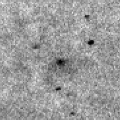
|
Now it is 13.8 mag (May 31, Thomas Lehmann). Fading gradually. In the Northern Hemisphere, it will be getting higher gradually. In the Southern Hemisphere, it stays observable in good condition.
Date(TT) R.A. (2000) Decl. Delta r Elong. m1 Best Time(A, h)
June 17 0 50.65 -4 36.2 2.067 2.065 75 14.4 2:58 (290, 19)
June 24 0 59.95 -3 53.8 2.028 2.102 79 14.5 3:00 (293, 23)
|
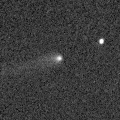
|
Now it is 14.9 mag (Mar. 19, Masayoshi Yoshimi). It stays 14 mag for a while. It will be getting higher gradually.
Date(TT) R.A. (2000) Decl. Delta r Elong. m1 Best Time(A, h)
June 17 2 43.34 4 26.1 3.855 3.240 46 14.5 2:58 (265, 1)
June 24 2 42.76 4 59.9 3.756 3.244 52 14.5 3:00 (269, 8)
|

|
Now it is 14.7 mag (June 13, Jean-Claude Merlin). Fading slowly. It locates somewhat low in the Northern Hemisphere. In the Southern Hemisphere, it stays observable in good condition.
Date(TT) R.A. (2000) Decl. Delta r Elong. m1 Best Time(A, h)
June 17 18 22.05 -22 52.7 1.928 2.934 170 14.6 0:45 ( 0, 32)
June 24 18 17.06 -24 0.1 1.912 2.928 177 14.6 0:12 ( 0, 31)
|
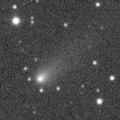
|
Now it is 14.4 mag (June 8, Thomas Lehmann). Fading gradually. In the Northern Hemisphere, it will be unobservable in August. In the Southern Hemisphere, it stays observable in good condition.
Date(TT) R.A. (2000) Decl. Delta r Elong. m1 Best Time(A, h)
June 17 13 22.36 -32 44.0 1.687 2.401 123 14.6 21:03 ( 18, 20)
June 24 13 24.23 -32 58.2 1.763 2.410 117 14.8 21:04 ( 24, 17)
|

|
It approached to Earth down to 0.12 a.u. in April, and brightened up to 11.5 mag (Apr. 8, Osamu Miyazaki). Now it is 14.6 mag (June 15, ATLAS Chile). Fading rapidly. It will be fainter than 18 mag in July. In the Northern Hemisphere, it will be getting higher gradually. In the Southern Hemisphere, it stays observable in good condition.
Date(TT) R.A. (2000) Decl. Delta r Elong. m1 Best Time(A, h)
June 17 1 47.75 -4 32.3 0.804 0.967 62 14.7 2:58 (281, 7)
June 24 1 59.93 -3 24.1 0.854 1.030 66 15.5 3:00 (282, 12)
|
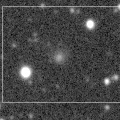
|
Now it is 15.3 mag (June 10, Thomas Lehmann). It stays 15 mag for a while. In the Northern Hemisphere, it stays observable in good condition. In the Southern Hemisphere, it will be getting lower gradually after this, and it will be unobservable in October. It is expected to brighten up to 12.5 mag in 2024 spring. At the high light, it will be observable in excellent condition in the Southern Hemisphere, but it will be low in the Northern Hemisphere.
Date(TT) R.A. (2000) Decl. Delta r Elong. m1 Best Time(A, h)
June 17 16 48.99 22 8.1 3.067 3.831 132 14.8 23:06 ( 0, 77)
June 24 16 34.74 21 17.5 3.052 3.784 129 14.8 22:24 ( 0, 76)
|
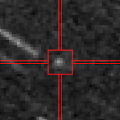
|
It is expected to brighten up to 7.5 mag in October, and it will be observable in excellent condition. Now it is 15.8 mag (June 1, Thomas Lehmann). Brightening rapidly. In the Northern Hemisphere, it stays observable in good condition. In the Southern Hemisphere, it will be getting lower gradually. But it will be getting higher again after September. In the Southern Hemisphere, it becomes low temporarily around the high light.
Date(TT) R.A. (2000) Decl. Delta r Elong. m1 Best Time(A, h)
June 17 22 32.23 10 56.7 1.344 1.828 100 15.4 2:58 (305, 54)
June 24 22 44.43 13 21.0 1.231 1.766 103 14.9 3:00 (308, 59)
|
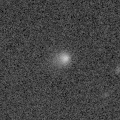
|
Now it is 14.9 mag (June 6, ATLAS Chile). Brightening slowly. It will be unobservable soon in the Northern Hemisphere, or in August in the Southern Hemisphere. But it will be observable again in September. It is expected to brighten up to 12 mag from 2024 to 2025.
Date(TT) R.A. (2000) Decl. Delta r Elong. m1 Best Time(A, h)
June 17 8 57.78 0 15.7 5.919 5.375 53 15.2 21:03 ( 88, 3)
June 24 8 59.56 0 47.8 5.972 5.334 47 15.2 21:04 ( 93, -2)
|

|
It will brighten up to 14 mag from 2024 to 2025. Now it is 15.4 mag (June 9, Thomas Lehmann). It stays 15 mag for a while. In the Northern Hemisphere, it is not observable now. In the Southern Hemisphere, it will be getting lower gradually. But it will be getting higher again after September.
Date(TT) R.A. (2000) Decl. Delta r Elong. m1 Best Time(A, h)
June 17 9 15.67 -27 57.2 6.253 6.037 73 15.3 21:03 ( 62,-10)
June 24 9 21.16 -27 35.3 6.297 6.008 69 15.3 21:04 ( 66,-14)
|

|
Now it is 15.9 mag (May 31, Taras Prystavski). It stays 15 mag for a while. In the Northern Hemisphere, it will be getting higher gradually. In the Southern Hemisphere, it stays observable in good condition.
Date(TT) R.A. (2000) Decl. Delta r Elong. m1 Best Time(A, h)
June 17 0 30.10 -5 41.7 3.467 3.452 80 15.4 2:58 (294, 22)
June 24 0 35.00 -5 21.7 3.384 3.466 86 15.4 3:00 (298, 27)
|
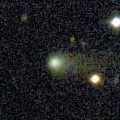
|
Now it is 15.8 mag (May 23, Toshihiko Ikemura, Hirohisa Sato). It stays 16 mag for a while. It will be unobservable in August in the Southern Hemisphere, or in September in the Northern Hemisphere.
Date(TT) R.A. (2000) Decl. Delta r Elong. m1 Best Time(A, h)
June 17 10 26.55 24 51.3 3.888 3.574 64 15.7 21:03 ( 98, 34)
June 24 10 34.97 24 5.5 3.989 3.596 60 15.7 21:04 (100, 30)
|

|
It brightened up to 13.4 mag in last summer (July 7, 2022, Giuseppe Pappa). Now it is 15.7 mag (June 10, Thomas Lehmann). Fading slowly. In the Northern Hemisphere, it stays observable in good condition. In the Southern Hemisphere, it will be unobservable in October.
Date(TT) R.A. (2000) Decl. Delta r Elong. m1 Best Time(A, h)
June 17 16 14.36 33 28.5 3.374 3.977 119 15.9 22:32 ( 0, 88)
June 24 16 3.59 33 55.6 3.478 4.020 115 16.0 21:54 ( 0, 89)
|

|
Now it is 16.9 mag (June 10, M. Jaeger, L. Demetz). It will fade out rapidly after this. It will be fainter than 18 mag in July. In the Northern Hemisphere, it is not observable now, but it will appear in July. In the Southern Hemisphere, it will be unobservable in July. In its last apparition in 2014, it was re-observed after 36-year blank.
Date(TT) R.A. (2000) Decl. Delta r Elong. m1 Best Time(A, h)
June 17 3 34.89 18 8.8 1.484 0.781 29 15.9 2:58 (247, -1)
June 24 4 11.12 21 19.0 1.549 0.794 27 16.1 3:00 (244, 0)
|
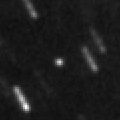
|
It will approach to Sun down to 0.4 a.u. in late September in 2024, and it is expected to brighten up to 0 mag. Now it is 16.7 mag (June 16, ATLAS Chile). It stays 16 mag for a while. It will be getting lower gradually after this, and it will be unobservable in October. At the high light, in the Northern Hemisphere, it will be observable in good condition after the perihelion passage. In the Southern Hemisphere, it will be observable in the low sky before and after the perihelion passage.
Date(TT) R.A. (2000) Decl. Delta r Elong. m1 Best Time(A, h)
June 17 14 18.62 3 20.1 5.644 6.273 124 16.2 21:03 ( 12, 58)
June 24 14 14.85 3 16.6 5.676 6.207 117 16.2 21:04 ( 26, 55)
|
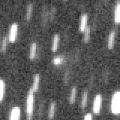
|
It returns for the first time in 70 years. It will brighten up to 4.5 mag in 2024 spring. Now it is 17.0 mag (June 16, J. Salto). Brightening gradually. In the Northern Hemisphere, it stays observable in good condition. In the Southern Hemisphere, it will be unobservable in July.
Date(TT) R.A. (2000) Decl. Delta r Elong. m1 Best Time(A, h)
June 17 19 9.45 52 32.2 3.899 4.222 101 16.4 1:31 (180, 72)
June 24 19 0.51 53 39.2 3.819 4.153 102 16.3 0:55 (180, 71)
|
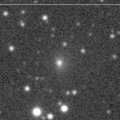
|
It brightened rapidly up to 14.3 mag in April (Apr. 17, Hidetaka Sato). Now it is 16.0 mag (June 7, Masayoshi Yoshimi). It will fade out rapidly after this. It will be fainter than 18 mag in July. It stays observable in good condition.
Date(TT) R.A. (2000) Decl. Delta r Elong. m1 Best Time(A, h)
June 17 13 23.14 0 5.4 1.529 2.149 113 16.3 21:03 ( 32, 50)
June 24 13 32.16 1 14.9 1.654 2.200 108 16.6 21:04 ( 40, 49)
|
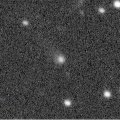
|
Now it is 16.8 mag (June 5, ATLAS Chile). It stays 16 mag for a while. In the Northern Hemisphere, it is not observable now, but it will appear in October. It locates somewhat low in the Southern Hemisphere. But it will become high in autumn.
Date(TT) R.A. (2000) Decl. Delta r Elong. m1 Best Time(A, h)
June 17 8 27.32 -12 17.1 4.318 3.817 54 16.5 21:03 ( 82,-10)
June 24 8 30.46 -13 4.4 4.369 3.802 50 16.5 21:04 ( 85,-16)
|

|
Rob Matson discovered it as a bright new comet as 11 mag from SWAN images between Apr. 5 and 15. It was revealed to be an asteroid which has been observed also in 2012 and 2018. It approached to Sun down to 0.5 a.u. on Mar. 29. Now it is 17.4 mag (June 8, J. L. Virlichie, P. Traverse, H. Roy, G. Houdin). Fading rapidly. It will be fainter than 18 mag in July. It locates somewhat low in the Northern Hemisphere. In the Southern Hemisphere, it stays observable in good condition.
Date(TT) R.A. (2000) Decl. Delta r Elong. m1 Best Time(A, h)
June 17 15 31.20 -56 8.7 0.572 1.498 139 16.5 21:51 ( 0, -1)
June 24 15 34.48 -48 53.0 0.667 1.589 140 17.1 21:26 ( 0, 7)
|

|
It has not been observed yet in this apparition. It will brighten very rapidly, and it is expected to brighten up to 15 mag in summer. Brightening slowly. It locates somewhat low in the Northern Hemisphere. In the Southern Hemisphere, it stays observable in good condition.
Date(TT) R.A. (2000) Decl. Delta r Elong. m1 Best Time(A, h)
June 17 17 1.37 -37 7.9 1.279 2.273 163 16.9 23:20 ( 0, 18)
June 24 16 54.89 -36 28.1 1.268 2.249 159 16.6 22:46 ( 0, 19)
|

|
Very far object. Now it is 17.0 mag (May 11, ATLAS South Africa). It stays 17 mag for a while. In the Northern Hemisphere, it is not observable now. In the Southern Hemisphere, it stays observable in good condition.
Date(TT) R.A. (2000) Decl. Delta r Elong. m1 Best Time(A, h)
June 17 5 24.08 -67 12.2 10.284 10.345 90 16.8 2:58 (334,-48)
June 24 5 27.82 -67 17.8 10.273 10.342 91 16.8 3:00 (333,-45)
|
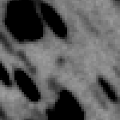
|
Now it is 16.9 mag (June 12, M. Urbanik). It stays 17 mag for a while. It stays observable in good condition.
Date(TT) R.A. (2000) Decl. Delta r Elong. m1 Best Time(A, h)
June 17 18 12.69 -11 56.1 1.814 2.811 166 16.9 0:35 ( 0, 43)
June 24 18 7.24 -11 29.4 1.787 2.789 168 16.8 0:02 ( 0, 43)
|

|
The ATLAS search program detected its cometary activity in April. Now it is 15.9 mag (June 16, Jean-Claude Merlin). Fading slowly. It locates somewhat low in the Northern Hemisphere. In the Southern Hemisphere, it stays observable in good condition.
Date(TT) R.A. (2000) Decl. Delta r Elong. m1 Best Time(A, h)
June 17 23 33.23 -24 7.8 2.357 2.733 100 16.8 2:58 (318, 18)
June 24 23 40.48 -24 9.5 2.297 2.747 105 16.8 3:00 (322, 21)
|

|
Now it is 17.4 mag (June 5, ATLAS-HKO, Haleakala). It stays 17 mag for a while. In the Northern Hemisphere, it stays observable in good condition. In the Southern Hemisphere, it will be unobservable in October.
Date(TT) R.A. (2000) Decl. Delta r Elong. m1 Best Time(A, h)
June 17 13 14.29 50 54.4 2.834 2.938 85 16.8 21:03 (141, 67)
June 24 13 20.44 49 26.9 2.867 2.927 83 16.9 21:04 (133, 65)
|

|
Now it is 18.7 mag (June 16, Jean-Claude Merlin). It stays 17 mag for a while. It stays observable in good condition. It is fainter than this ephemeris recently.
Date(TT) R.A. (2000) Decl. Delta r Elong. m1 Best Time(A, h)
June 17 23 0.04 -8 10.6 2.654 3.036 102 17.1 2:58 (315, 35)
June 24 23 4.24 -8 20.0 2.563 3.035 107 17.0 3:00 (321, 39)
|
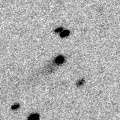
|
Now it is 17.0 mag (May 23, Toshihiko Ikemura, Hirohisa Sato). It stays 17 mag for a while. It will be getting lower gradually after this, and it will be unobservable in September. But it will be observable again in October in the Northern Hemisphere.
Date(TT) R.A. (2000) Decl. Delta r Elong. m1 Best Time(A, h)
June 17 12 19.14 14 28.2 8.918 9.031 93 17.1 21:03 ( 67, 51)
June 24 12 17.56 14 27.7 9.047 9.039 86 17.2 21:04 ( 74, 46)
|
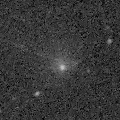
|
Very large comet. It is expected to brighten up to 14 mag in 2031. Now it is 16.1 mag (June 1, Thomas Lehmann). It stays 17 mag for a while. In the Northern Hemisphere, it is not observable now. In the Southern Hemisphere, it stays observable in good condition. In the Northern Hemisphere, it is not observable until 2030.
Date(TT) R.A. (2000) Decl. Delta r Elong. m1 Best Time(A, h)
June 17 3 15.52 -58 8.9 17.578 17.551 86 17.2 2:58 (321,-34)
June 24 3 18.36 -58 25.7 17.512 17.526 89 17.2 3:00 (322,-31)
|

|
Now it is 17.4 mag (May 25, ATLAS-HKO, Haleakala). Fading gradually. It will be fainter than 18 mag in August. It locates somewhat low.
Date(TT) R.A. (2000) Decl. Delta r Elong. m1 Best Time(A, h)
June 17 10 10.64 17 3.4 2.497 2.235 63 17.2 21:03 ( 92, 27)
June 24 10 23.01 15 42.5 2.567 2.240 60 17.3 21:04 ( 93, 23)
|

|
It brightened up to 13.6 mag in 2021 (June 17, 2021, R. Carstens). Now it is 17.3 mag (June 9, D. Husar, M. Junius, S. Messner). It stays 18 mag for a while. In the Northern Hemisphere, it will never be observable after this. In the Southern Hemisphere, it stays observable in good condition.
Date(TT) R.A. (2000) Decl. Delta r Elong. m1 Best Time(A, h)
June 17 11 2.58 -65 45.1 6.294 6.671 107 17.3 21:03 ( 21,-19)
June 24 11 0.47 -64 44.8 6.382 6.704 104 17.3 21:04 ( 24,-21)
|

|
It brightened up to 12.7 mag in last year (Feb. 27, 2022, Jose Guilherme de S. Aguiar). Now it is 17.4 mag (June 2, J. L. Virlichie, P. Traverse, H. Roy). Fading gradually. It will be fainter than 18 mag in August. It locates somewhat low in the Northern Hemisphere. In the Southern Hemisphere, it stays observable in good condition.
Date(TT) R.A. (2000) Decl. Delta r Elong. m1 Best Time(A, h)
June 17 20 0.09 -25 47.8 2.153 3.062 147 17.3 2:22 ( 0, 29)
June 24 19 55.35 -26 6.5 2.134 3.088 155 17.4 1:50 ( 0, 29)
|
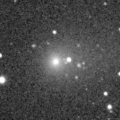
|
It brightened up to 12.4 mag in winter (Feb. 10, Taras Prystavski). Now it is 18.0 mag (June 12, ATLAS Chile). Fading gradually. It will be fainter than 18 mag in July. It locates somewhat low in the Northern Hemisphere. In the Southern Hemisphere, it will be getting lower gradually.
Date(TT) R.A. (2000) Decl. Delta r Elong. m1 Best Time(A, h)
June 17 10 28.48 15 12.4 2.645 2.454 68 17.3 21:03 ( 88, 30)
June 24 10 39.43 14 15.3 2.754 2.487 64 17.5 21:04 ( 90, 26)
|

|
Now it is 17.3 mag (June 13, J. L. Virlichie, P. Traverse, H. Roy, G. Houdin). Fading slowly. It will be fainter than 18 mag in September. In the Northern Hemisphere, it will never be observable after this. In the Southern Hemisphere, it stays observable in good condition.
Date(TT) R.A. (2000) Decl. Delta r Elong. m1 Best Time(A, h)
June 17 21 2.69 -77 5.2 1.560 2.258 121 17.5 2:58 (358,-22)
June 24 18 29.48 -79 35.5 1.493 2.224 123 17.3 0:36 ( 0,-25)
|
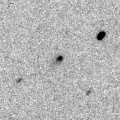
|
Now it is 17.5 mag (June 16, ATLAS-HKO, Haleakala). It stays 18 mag for a while. It locates somewhat low.
Date(TT) R.A. (2000) Decl. Delta r Elong. m1 Best Time(A, h)
June 17 10 29.60 25 54.1 2.758 2.506 65 17.4 21:03 ( 99, 35)
June 24 10 40.34 24 29.4 2.825 2.504 61 17.4 21:04 ( 99, 31)
|

|
It brightened up to 14.1 mag in 2022 spring (Mar. 22, 2022, Chris Wyatt). It was expected to brighten up to 13 mag. But actually, it was fainter than originally expected. It stays 18 mag for a while. In the Northern Hemisphere, it is not observable now, but it will be observable soon. In the Southern Hemisphere, it stays observable in good condition.
Date(TT) R.A. (2000) Decl. Delta r Elong. m1 Best Time(A, h)
June 17 3 1.28 -4 58.5 5.239 4.619 47 17.4 2:58 (271, -8)
June 24 3 3.24 -4 29.4 5.203 4.664 53 17.4 3:00 (274, -2)
|

|
It showed cometary activity in 2023, and brightened rapidly. Now it is 17.2 mag (May 27, Jean-Claude Merlin). Fading slowly. It will be fainter than 18 mag in August. It stays extremely low in the Northern Hemisphere. In the Southern Hemisphere, it stays observable in good condition.
Date(TT) R.A. (2000) Decl. Delta r Elong. m1 Best Time(A, h)
June 17 14 14.94 -42 33.4 2.632 3.415 133 17.5 21:03 ( 5, 12)
June 24 14 14.95 -41 40.5 2.693 3.421 128 17.6 21:04 ( 11, 12)
|

|
First return of a new periodic comet which brightened up to 15 mag in 2008. Now it is 18.1 mag (June 8, R. Kresken, F. Ocana, M. Micheli, L. Conversi). It stays 18 mag for a while. In the Northern Hemisphere, it will be getting higher gradually. It locates somewhat low in the Southern Hemisphere. But it will become high in autumn.
Date(TT) R.A. (2000) Decl. Delta r Elong. m1 Best Time(A, h)
June 17 1 56.84 21 26.0 2.854 2.354 51 17.6 2:58 (257, 20)
June 24 2 10.19 21 55.2 2.803 2.363 54 17.6 3:00 (259, 23)
|
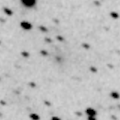
|
Now it is 17.6 mag (May 25, Ken-ichi Kadota). Fading gradually. It will be fainter than 18 mag in July. In the Northern Hemisphere, it stays observable in good condition. It locates somewhat low in the Southern Hemisphere. It looks diffuse, but it has a large coma.
Date(TT) R.A. (2000) Decl. Delta r Elong. m1 Best Time(A, h)
June 17 22 24.26 23 49.4 2.119 2.449 96 17.6 2:58 (288, 64)
June 24 22 24.76 25 40.8 2.093 2.494 100 17.7 3:00 (293, 71)
|
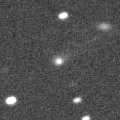
|
It brightened up to 15.9 mag in 2022 spring (May 5, Toshiyuki Takahashi). Now it is 16.8 mag (May 25, Ken-ichi Kadota). It stays 18 mag for a while. It locates somewhat low in the Northern Hemisphere. In the Southern Hemisphere, it stays observable in good condition.
Date(TT) R.A. (2000) Decl. Delta r Elong. m1 Best Time(A, h)
June 17 16 0.32 -24 3.9 4.018 4.970 157 17.6 22:19 ( 0, 31)
June 24 15 57.40 -23 56.1 4.072 4.979 150 17.7 21:48 ( 0, 31)
|

|
Now it is 17.8 mag (Feb. 26, Jean-Claude Merlin). It stays 17 mag for a while. In the Northern Hemisphere, it is not observable now, but it will appear in July. In the Southern Hemisphere, it will be getting higher gradually.
Date(TT) R.A. (2000) Decl. Delta r Elong. m1 Best Time(A, h)
June 17 4 18.92 -9 10.1 8.742 7.967 38 17.7 2:58 (263,-26)
June 24 4 23.03 -9 2.0 8.666 7.933 41 17.7 3:00 (266,-21)
|

|
Now it is 17.2 mag (June 11, ATLAS-HKO, Haleakala). It stays 18 mag for a while. In the Northern Hemisphere, it stays observable in good condition. In the Southern Hemisphere, it will never be observable after this.
Date(TT) R.A. (2000) Decl. Delta r Elong. m1 Best Time(A, h)
June 17 16 6.46 80 17.3 10.228 10.024 75 17.8 22:21 (180, 45)
June 24 15 47.28 80 6.1 10.262 10.043 74 17.8 21:34 (180, 45)
|

|
It will brighten up to 16 mag in next winter. Now it is 18.2 mag (May 24, Ken-ichi Kadota). It stays 17 mag for a while. In the Northern Hemisphere, it will be getting lower gradually after this, and it will be unobservable in September. But it will be observable again in September. In the Southern Hemisphere, it is not observable now.
Date(TT) R.A. (2000) Decl. Delta r Elong. m1 Best Time(A, h)
June 17 11 26.78 68 7.1 2.809 2.592 67 17.9 21:03 (155, 47)
June 24 11 17.94 64 18.3 2.831 2.546 63 17.8 21:04 (148, 45)
|

|
It has not been observed yet in this apparition. It is expected to brighten up to 14 mag in winter. Brightening gradually. In the Northern Hemisphere, it will be getting higher gradually. In the Southern Hemisphere, it stays observable in good condition.
Date(TT) R.A. (2000) Decl. Delta r Elong. m1 Best Time(A, h)
June 17 2 5.84 7 9.3 3.726 3.229 53 18.0 2:58 (268, 10)
June 24 2 14.11 7 55.8 3.609 3.191 58 17.8 3:00 (271, 15)
|

|
It is expected to brighten up to 14 mag in 2024 summer. At the high light, it is not observable in the Northern Hemisphere. Now it is 18.6 mag (Feb. 16, Toshihiko Ikemura, Hirohisa Sato). Brightening gradually. It will be getting higher gradually.
Date(TT) R.A. (2000) Decl. Delta r Elong. m1 Best Time(A, h)
June 17 3 3.52 10 23.1 5.495 4.753 39 18.0 2:58 (258, 1)
June 24 3 7.85 9 57.0 5.364 4.702 45 17.9 3:00 (261, 5)
|
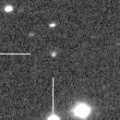
|
It will brighten up to 16 mag in 2024 spring. Now it is 18.3 mag (May 24, ATLAS South Africa). It stays 18 mag for a while. It will be unobservable soon in the Northern Hemisphere, or in August in the Southern Hemisphere. But it will be observable again in October in the Southern Hemisphere.
Date(TT) R.A. (2000) Decl. Delta r Elong. m1 Best Time(A, h)
June 17 9 10.23 -4 47.1 4.545 4.108 58 17.9 21:03 ( 82, 3)
June 24 9 17.37 -4 56.6 4.587 4.075 54 17.9 21:04 ( 85, -2)
|
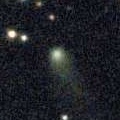
|
Now it is 17.6 mag (June 5, A. Diepvens). It stays 18 mag for a while. In the Northern Hemisphere, it stays observable in good condition. In the Southern Hemisphere, it will never be observable after this.
Date(TT) R.A. (2000) Decl. Delta r Elong. m1 Best Time(A, h)
June 17 18 32.23 64 45.9 6.602 6.702 91 17.9 0:53 (180, 60)
June 24 18 26.61 65 4.7 6.636 6.738 91 18.0 0:20 (180, 60)
|

|
It was predicted to brighten up to 16 mag in 2023. But actually, it is very faint as 18.3 mag (May 30, Taras Prystavski). Fading slowly. In the Northern Hemisphere, it is not observable now. In the Southern Hemisphere, it stays observable in good condition.
Date(TT) R.A. (2000) Decl. Delta r Elong. m1 Best Time(A, h)
June 17 20 21.36 -77 53.9 2.804 3.455 122 18.2 2:46 ( 0,-23)
June 24 20 0.47 -77 36.7 2.804 3.479 124 18.2 1:58 ( 0,-23)
|
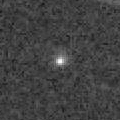
|
It was observed at 17 mag in 2022 autumn. It was predicted to be observable at 17 mag also in 2023 spring. But actually, it is extremely faint as 19.8 mag (May 28, Mt. Lemmon Survey). It will fade out rapidly after this. In the Northern Hemisphere, it will be getting lower gradually. In the Southern Hemisphere, it stays observable in good condition.
Date(TT) R.A. (2000) Decl. Delta r Elong. m1 Best Time(A, h)
June 17 15 9.31 22 37.0 1.682 2.375 121 20.8 21:26 ( 0, 77)
June 24 14 47.47 20 53.5 1.837 2.434 113 21.1 21:04 ( 24, 74)
|
|
![]()
 C/2019 U5 ( PanSTARRS )
C/2019 U5 ( PanSTARRS ) 237P/LINEAR
237P/LINEAR C/2020 K1 ( PanSTARRS )
C/2020 K1 ( PanSTARRS ) C/2021 S3 ( PanSTARRS )
C/2021 S3 ( PanSTARRS ) 81P/Wild 2
81P/Wild 2 C/2019 L3 ( ATLAS )
C/2019 L3 ( ATLAS ) C/2022 E3 ( ZTF )
C/2022 E3 ( ZTF ) C/2019 T4 ( ATLAS )
C/2019 T4 ( ATLAS ) 126P/IRAS
126P/IRAS C/2021 Y1 ( ATLAS )
C/2021 Y1 ( ATLAS ) 29P/Schwassmann-Wachmann 1
29P/Schwassmann-Wachmann 1 C/2022 W3 ( Leonard )
C/2022 W3 ( Leonard ) 71P/Clark
71P/Clark C/2021 X1 ( Maury-Attard )
C/2021 X1 ( Maury-Attard ) 199P/Shoemaker 4
199P/Shoemaker 4 77P/Longmore
77P/Longmore 364P/PanSTARRS
364P/PanSTARRS C/2022 L2 ( ATLAS )
C/2022 L2 ( ATLAS ) 103P/Hartley 2
103P/Hartley 2 C/2022 E2 ( ATLAS )
C/2022 E2 ( ATLAS ) C/2021 G2 ( ATLAS )
C/2021 G2 ( ATLAS ) 117P/Helin-Roman-Alu 1
117P/Helin-Roman-Alu 1 C/2020 S4 ( PanSTARRS )
C/2020 S4 ( PanSTARRS ) C/2020 R7 ( ATLAS )
C/2020 R7 ( ATLAS ) 72P/Denning-Fujikawa
72P/Denning-Fujikawa C/2023 A3 ( Tsuchinshan-ATLAS )
C/2023 A3 ( Tsuchinshan-ATLAS ) 12P/Pons-Brooks
12P/Pons-Brooks C/2023 B2 ( ATLAS )
C/2023 B2 ( ATLAS ) C/2022 A3 ( Lemmon-ATLAS )
C/2022 A3 ( Lemmon-ATLAS ) P/2018 HT3 ( NEOWISE )
P/2018 HT3 ( NEOWISE ) 213P/Van Ness
213P/Van Ness C/2019 E3 ( ATLAS )
C/2019 E3 ( ATLAS ) 219P/LINEAR
219P/LINEAR C/2022 JK5 ( PanSTARRS )
C/2022 JK5 ( PanSTARRS ) C/2022 U4 ( Bok )
C/2022 U4 ( Bok ) 287P/Christensen
287P/Christensen C/2020 F2 ( ATLAS )
C/2020 F2 ( ATLAS ) C/2014 UN271 ( Bernardinelli-Bernstein )
C/2014 UN271 ( Bernardinelli-Bernstein ) 94P/Russell 4
94P/Russell 4 C/2018 U1 ( Lemmon )
C/2018 U1 ( Lemmon ) 116P/Wild 4
116P/Wild 4 118P/Shoemaker-Levy 4
118P/Shoemaker-Levy 4 C/2023 K1 ( ATLAS )
C/2023 K1 ( ATLAS ) 180P/NEAT
180P/NEAT C/2020 Y2 ( ATLAS )
C/2020 Y2 ( ATLAS ) P/2014 OL465 ( PanSTARRS )
P/2014 OL465 ( PanSTARRS ) P/2023 L1 ( Hill )
P/2023 L1 ( Hill ) 80P/Peters-Hartley
80P/Peters-Hartley 99P/Kowal 1
99P/Kowal 1 C/2022 QE78 ( ATLAS )
C/2022 QE78 ( ATLAS ) C/2019 O3 ( Palomar )
C/2019 O3 ( Palomar ) C/2022 V2 ( Lemmon )
C/2022 V2 ( Lemmon ) 32P/Comas Sola
32P/Comas Sola C/2022 S4 ( Lemmon )
C/2022 S4 ( Lemmon ) C/2022 T1 ( Lemmon )
C/2022 T1 ( Lemmon ) C/2020 H6 ( ATLAS )
C/2020 H6 ( ATLAS ) C/2021 C5 ( PanSTARRS )
C/2021 C5 ( PanSTARRS ) C/2022 Q2 ( ATLAS )
C/2022 Q2 ( ATLAS )![]()






















































